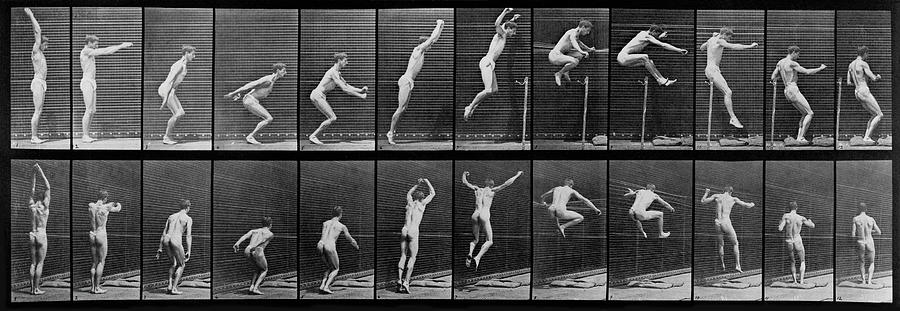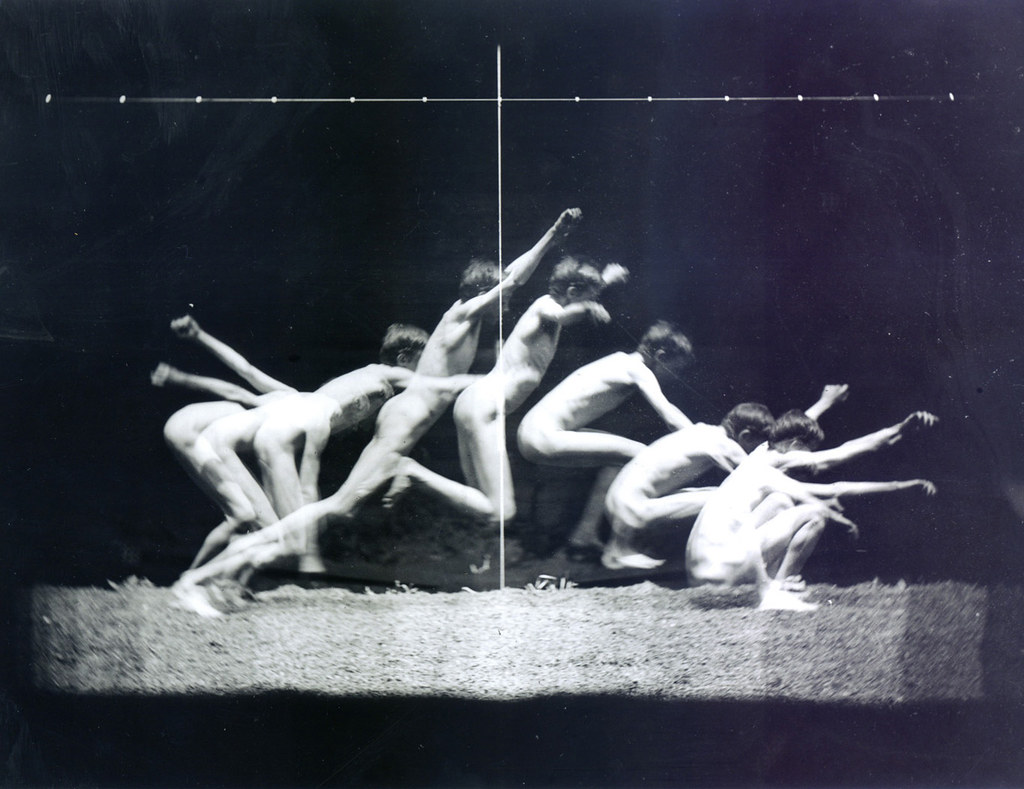Anticipation is the animation principle that helps let the audience know what will happen next. It is also the animation principle that beginning students forget to use to help their animated scenes.
Here's a jump from Eadweard Muybridge's cameras.
Pose 1 <-----Anticipation-----> Pose 2 <----------- Inbetweens --------> Pose 3 <-- Inbetweens----->

Anticipation sets up the next big action.
To throw a baseball, the pitcher must wind up first (this is anticipation) in order to throw a fast ball to the batter.
A golfer must (anticipate) by winding up to strike a golf ball.
A bowler must (anticipate) by pulling back the bowling ball in order to hurdle it to get a strike.
Anticipation is used in the simplest of actions.
 A very cartoony version of this is when the character needs to leave the frame very quicky. The Character will Anticipate into this pre-exit Pose.
A very cartoony version of this is when the character needs to leave the frame very quicky. The Character will Anticipate into this pre-exit Pose.And then exits the scene in 1 or 2 drawings...
Think about a character who sneezes.
The character will start tilting back (anticipating) into several poses during the "Ah....ah.... Ah!" part of the sneeze. Then in the big ending part of the sneeze, move in the opposite direction during the "CHOOOoo".
When our character needs to jump over an obstacle, he can either back up a few steps (anticipate the jump) and take a big step forward and jump over. Or the character can squat down bending his knees and back (anticipate the jump) and then leap up and over the obstacle.
Study Eadweard Muybridge's photos on how we jump.
From a run:

From a standing pose.

Or a variety of jumps like this one.

No comments:
Post a Comment